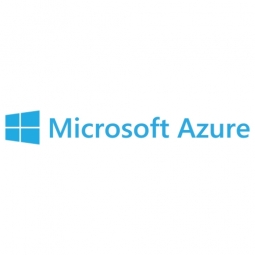Technology Category
- Application Infrastructure & Middleware - Data Visualization
- Infrastructure as a Service (IaaS) - Cloud Computing
Applicable Industries
- Consumer Goods
- Electrical Grids
Applicable Functions
- Maintenance
- Product Research & Development
Use Cases
- Predictive Waste Reduction
- Time Sensitive Networking
Services
- System Integration
- Training
About The Customer
Arla Foods is a Denmark-based dairy company and the fifth-largest in the world. The company has a rich history dating back to the 1800s when the first cooperative dairy was established in Sweden. Arla is farmer-owned, and all earnings go back to the farm owners. The company places a large emphasis on the journey that its milk products take from cows to customers, recording and tracing every step of the way. Arla is committed to high standards of animal welfare, product quality, and safety, combining traditional craftsmanship and technology to ensure products remain as close to nature as possible. The company has over 10,000 employees and operates in the consumer goods industry.
The Challenge
Arla Foods, the fifth-largest dairy company in the world, faced significant challenges with its data management. The company had a complex, spaghetti-like structure of data systems, each with unique upkeep and management challenges. The cost of maintaining these systems was growing, and employees were spending more time managing the systems than gaining insights from the data within them. The company had thousands of different applications, but none were transferable, creating a highly inefficient set of siloed solutions. Furthermore, the company was using Microsoft Power BI as a visualization tool, but without proper data architecture, the tool quickly became overloaded and began to fail. The company recognized that its current process was not working and set out to find a solution that would both save it money and move its business forward.
The Solution
Arla Foods decided to centralize its data using Azure. The company used SAP BW on HANA for financial data and analysis, and moved all non-SAP data to the cloud. Azure provided every tool necessary for a complete solution, eliminating the need for any third-party tools. The company developed a data foundation on Azure that created one centralized location for data anywhere in the company to be ingested and consumed. The centralized data could then be used for a variety of business needs, from self-service reporting in Power BI to exploratory analytics and for powering data-driven applications. The company also used Azure Data Factory to extract data from other on-premises sources and stored it raw in Azure Data Lake Store Gen2. The data was then cleansed and transformed into a curated data layer, also stored in Azure Data Lake Store Gen2. For reporting, the curated data layer was loaded into specific data marts built per use case. The new architecture allowed Power BI to be used to its full extent, capacity could be managed, and data models could be significantly simplified to avoid performance issues.
Operational Impact
Quantitative Benefit

Case Study missing?
Start adding your own!
Register with your work email and create a new case study profile for your business.
Related Case Studies.
.png)
Case Study
Improving Vending Machine Profitability with the Internet of Things (IoT)
The vending industry is undergoing a sea change, taking advantage of new technologies to go beyond just delivering snacks to creating a new retail location. Intelligent vending machines can be found in many public locations as well as company facilities, selling different types of goods and services, including even computer accessories, gold bars, tickets, and office supplies. With increasing sophistication, they may also provide time- and location-based data pertaining to sales, inventory, and customer preferences. But at the end of the day, vending machine operators know greater profitability is driven by higher sales and lower operating costs.

Case Study
Hydro One Leads the Way In Smart Meter Development
In 2010, Ontario’s energy board mandated that time-of-use (TOU) pricing for consumers be available for all consumers on a regulated price plan. To meet this requirement, Hydro One needed to quickly deploy a smart meter and intelligent communications network solution to meet the provincial government’s requirement at a low cost. The network needed to cover Hydro One’s expansive service territory, which has a land mass twice the size of Texas, and its customers live in a mix of urban, rural, and remote areas, some places only accessible by air, rail, boat or snowmobile. Most importantly, the network needed to enable future enterprise-wide business efficiencies, modernization of distribution infrastructure and enhanced customer service. To meet these needs, Hydro One conceptualized an end-to-end solution leveraging open standards and Internet Protocols (IP) at all communication levels. The utility drew upon industry leaders like Trilliant to realize this vision.

Case Study
Selling more with Whirlpool
Whirlpool wanted to add connectivity to appliances and transform the company's relationship with customers. Traditionally, Whirlpool interaction with customers was limited to purchases made once every ten years. Connected washer and dryers provide exciting new features like remote management of start times and inter-machine communication.

Case Study
Series Production with Lot-size-1 Flexibility
Nobilia manufactures customized fitted kitchens with a lot size of 1. They require maximum transparency of tracking design data and individual processing steps so that they can locate a particular piece of kitchen furniture in the sequence of processes.





